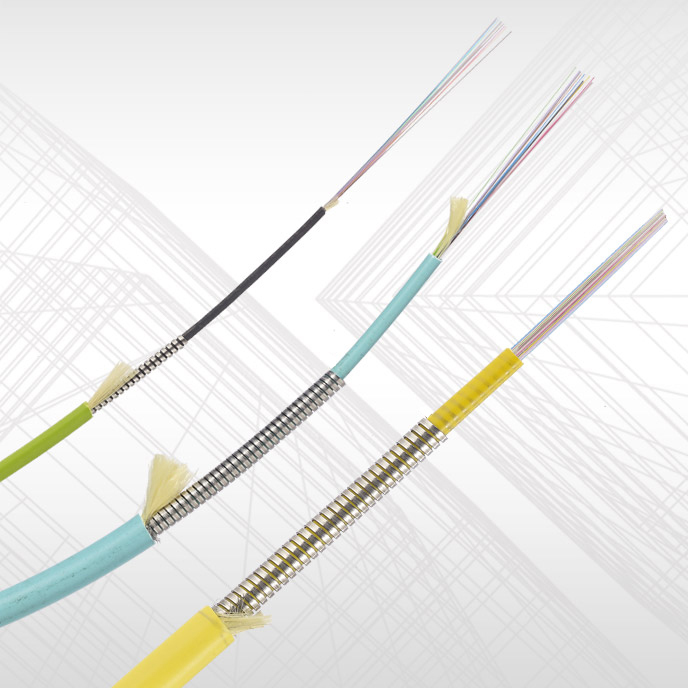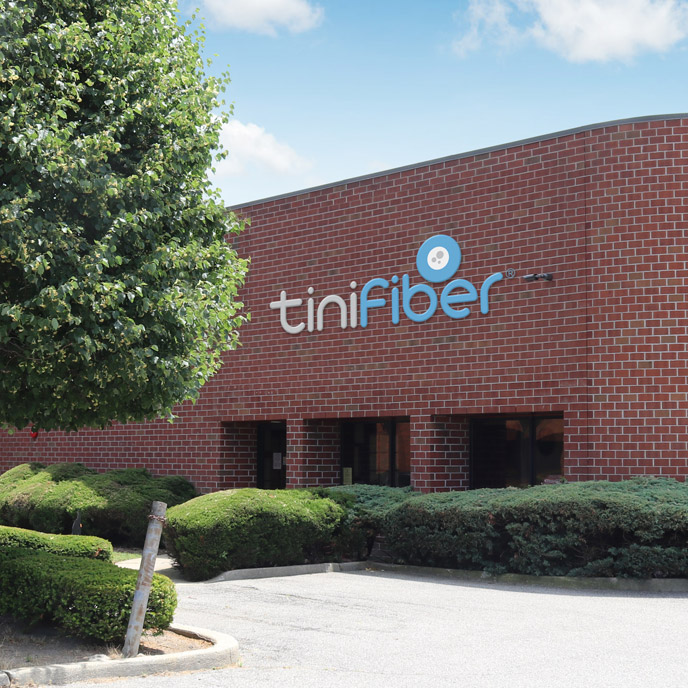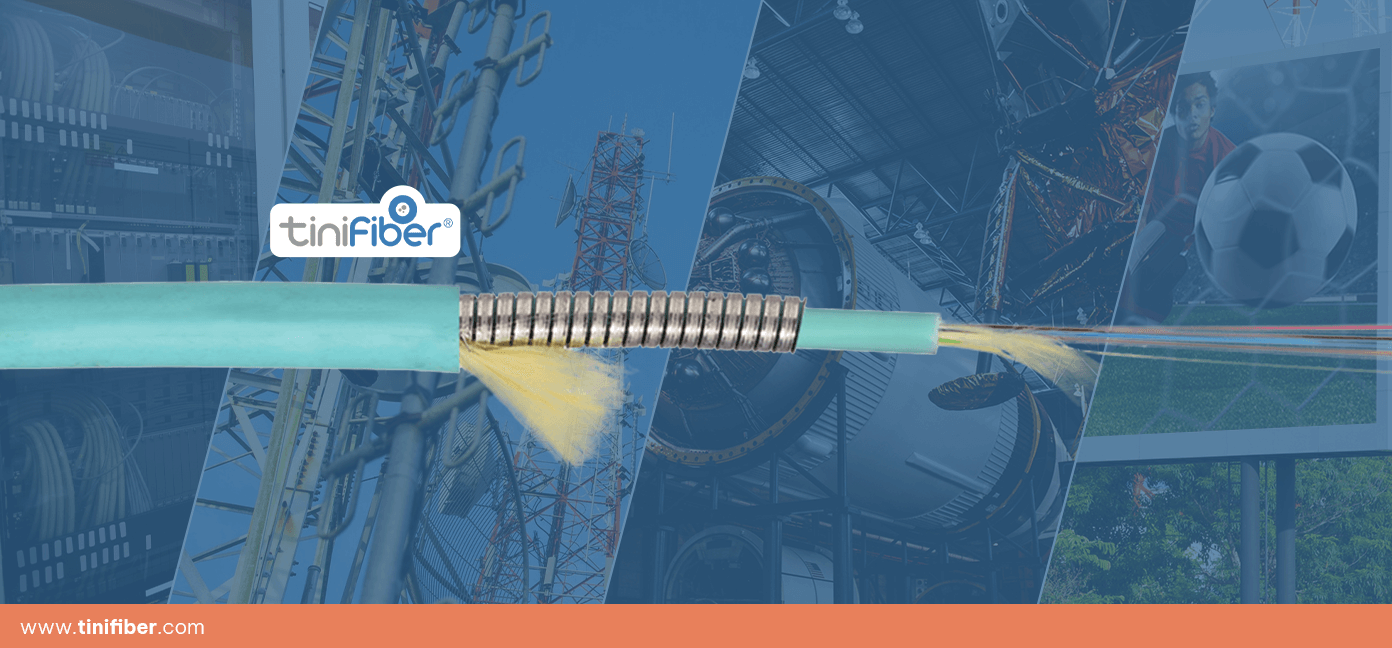What are Fiber Optic Cables and How Do They Work?
A fiber optic cable is constructed up of glass strands. The strands are slightly thicker than human hair. Each strand has a core in the middle that permits light to pass through. Each core is encased in cladding, a layer of glass that bounces light inward to reduce signal loss while also allowing light to penetrate through the cable’s bends.
Fiber optic cables are divided into two categories: single-mode and multi-mode. The single-mode fiber generates light using very thin glass strands and a laser. LED is used in multi-mode fiber optic connections.
Wave Division Multiplexing techniques are commonly used in single-optic fiber cable networks to increase the amount of data traffic that each strand can transport. Wave Division Multiplexing permits several wavelengths of light to be combined and separated later. Multiple communication streams are effectively transmitted in a single light pulse
Common applications for armored fiber optic cables:
Now that we know how fiber optic cables function and how optical fiber is used to carry data in the form of light, we can discuss the armor around the fiber. Armored fiber cables are what allow the fiber to exist in nearly any environment without the risk of damage from external factors such as weathering, chemicals, rodents, and being crushed. In the current market, there are 2 primary types of armored fiber. Aluminum Interlocking Armor (AIA) cables which are weather resistant but not rodent or crush proof, and Stainless Steel Micro-Armor by TiniFiber. Micro-Armor is not only smaller and lighter than AIA cables, but is crush proof allowing for superior strength to be matched with increased useability.
Armored fiber optic cable uses and applications can be observed in:
- Internet Access/Use
- Computer Networking/Data Centers
- Remote sensing
- Surgery & Dentistry
- Audio & Video
- Phone Communications
- Cable Television
- Military & Space
- Digital Billboards
#1 – The Internet
Fiber optic cables are lighter, less bulky, and flexible than typical copper cabling, and they can carry large volumes of data at very high rates. As a result, fiber optic cables are increasingly more commonly employed for internet cables.
#2 – Computer Networking/Data Centers
People have noticed a significant reduction in the amount of time it takes to transfer files and information across various networks. Networking between computer architectures became faster and easier because of fiber optic cables.
#3 – Remote Sensing
Temperature, pressure, and strain are all measured using fiber optic cables as sensors. They can modify the phase, intensity, wavelength, and polarization of light in the fiber by changing the fiber count. Remote sensing with fiber optic cables is convenient because it does not require energy in a remote place. They’re also suitable for usage in locations with high voltage or flammable materials.
#4 – Surgery & Dentistry
Fiber optic cables are commonly utilized in the medical industry. In endoscopy, optical communication is critical (non-intrusive surgical methods). A small, bright light is used to illuminate the operation area inside the body, allowing the number and size of incisions to be reduced. Biomedical research and microscopy both employ fiber optics.
#5 – Audio & Video (AV)
Fiber optic cables are essential for providing the highest quality audio and visual experiences for live concerts/shows, arenas, stadiums, and more. As technology rapidly advances, the need for hardware that can support the amount of data that needs to be sent in order for new technologies to function becomes ever more present. With armored fiber cables, the amount of ways to have the highest level of audio and video experiences becomes limitless.
#6 – Phone Communications
Calling inside the country or internationally has never been easier thanks to contemporary technologies. Faster connections and clearer conversations are possible with fiber-optic connectivity.
#7 – Film Production
In the modern film industry, cameras are becoming more and more high tech trying to capture the highest quality images possible. With the introduction of 3D films and 4K video, the need for seamless data transfer and storage requires the use of fiber optic cables. Without them, the rate of speed it would take to capture or transfer these massive amounts of data from videos would make production costs intolerable making film limited to lower quality pictures.
#8 – Cable Television
Since their discovery, fiber optic cables have been utilized to transport cable communications. Because they have higher bandwidth and faster speeds, they are suitable for signal transmission for HD televisions
#9 – Military & Space
For military and aerospace applications, fiber optic cables are the ideal alternative for transmitting high-security data. The fiber’s ability to transfer massive amounts of data in the fastest speeds possible creates an information superhighway that is fit for the Military and Space science needs.
#10) Digital Billboards/Screens
Have you ever seen a lit up digital billboard on the side of the road? These are basically like stacking various televisions next to each other with a single image/video playing over all of them in perfect synchronicity so that it looks like one giant screen. In order to do this, a large amount of power and data flow is needed to allow for consistently high quality images. You could even say that these digital LED boards wouldn’t be able to exist without the use of Fiber Optic Cables.
All in all, it is clear to see that fiber cables are not just for faster internet browsing. It is becoming a staple within the development of our society on this planet and a beginning of a technological future in which the rate at which technology and communication evolves will be at speeds and amounts that have never been seen before. Armored fiber cable is what allows this future to exist without any interference from damage done to the fiber cables delivering on that future.













